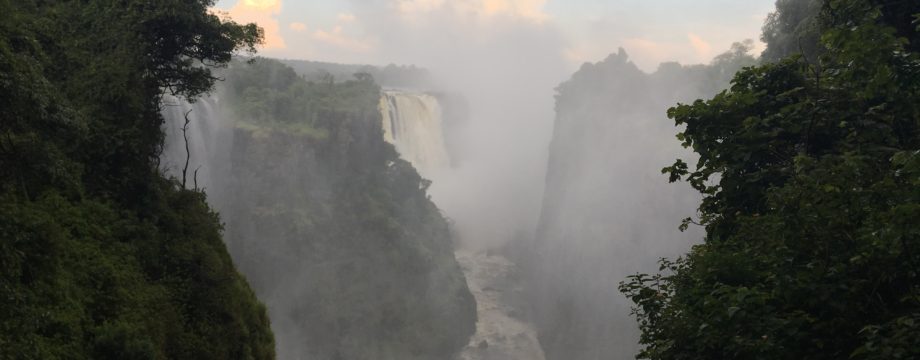This article was originally published on Cache Up NB. It has been mirrored here for archive purposes only.
While doing a typical cache run in the city of Moncton, I ran into a geocacher named Not4U2No who claimed to be from the future and had traveled back in time for a vacation (which apparently is quite common in his time). He provided me the article below. It paints a very interesting future for our beloved sport.
May 1st, 2040. Allentown, PA. Today marks the 40th anniversary of the launch of the sport of geocaching. What started so many decades ago as a mere high tech treasure hunt, has since transformed into so much more. In celebration of this long lasting sport, here’s a brief history of how geocaching came to be, and how it’s evolved over it’s 40 year lifecycle.
In May of 2000, The US government disabled the selective availability feature of the Global Positioning System. As a result, consumer GPS units could now receive accuracy of as little as 2-3 feet within a given object. Shortly thereafter, Dave Ulmer hid an 18 gallon jug in the woods and posted the coordinates to the container on the internet. This launched the sport of geocaching and it spread very quickly. In November of that same year, Jeremy Irish founded Groundspeak which would be the company behind www.geocaching.com. In the span of 10 years, the site grew to encompass geocaches from all over the world. In fact, they broke the one million geocache listed mark before the 10 year anniversary.
The sport remained relatively unchanged for the next few years with a few notable exceptions. In July of 2011, Groundspeak officially revived the long gone “Virtual” cache and began allowing users to re-list new virtual caches. Several months later, Waymarking.com (spawned out of the original discontinuance of virtual caches) was decommissioned. In January of 2012, Groundspeak released the Spark. The Spark was an attempt by Groundspeak to launch their own GPS device used specifically for geocaching. Unfortunately, due to manufacturing problems, a number of product defects, and a poor design interface, the product flopped and was discontinued within six months. In October of 2012, after having been delayed for unknown reasons several times, the first public API to the geocaching.com database was released. This first API was hailed as a huge milestone to the geocaching community as they had been lobbying for years to get more open access to the data held on geocaching.com.
Over the next few years, several new cache types were introduced. The wildlife cache, signal cache, Project SETI cache, hamster cache and several other obscure cache types were introduced but mainly failed. The “Crab Cake” cache was an attempt to capture the fascination with crab cakes and the world of geocaching. The “ReverseInsideOutandBackwards” cache, the “Space” cache, and the “Marine” cache were all notable cache types in that they gave cachers a new icon for their profile, but didn’t provide much else. The introduction however of the official “Puzzle” cache, which was now a separate type from an “Unknown” cache, and the “Challenge” cache types were a welcome addition to the types of caches available. The final “Ape” cache in Brazil was archived in the summer of 2018 after a monkey ran off with the container (how ironic). The next ten years of geocaching would remain relatively the same with new features added to the main site, and other third party sites popping up and eventually folding. A big shift of focus from GPS units to mobile device geocaching would drive the next ten years of geocaching.
In August of 2028, the landscape of geocaching would be forever changed. A geocacher known as Not4U2No held a side event the day before the yearly GeoWoodstock festival. This event had been held in his local town for several years, but this was the first year he decided to try it on a larger scale. A sort of “competitive geocaching” event, it pitted teams of 10 geocachers against each other as they sought out various geocache containers within a specific area. Not4U2No had found a corporate sponsor willing to put up a prize for first, second, and third place. The first place prize was a new GPS unit for every member of the winning team.
Shortly after the event, Not4U2No (who’s real name was Dale Fletcher) was approached by the same corporate sponsor to see if he would be interested in trying to form the National Geocaching League (NGL) and turn the sport of geocaching into a competitive sport. A year later, the NGL was launched with ten teams consisting of geocachers from the United States and Canada. Teams would compete to find certain types of caches and a certain amount of caches within a specific time period. Using a series of “follow-cams”, players and teams were recorded as they attempted to find caches in specific regions of both Canada and the United States. Much like baseball and hockey leagues, regular season “games” would play out to accumulate points, and then eventually teams would compete in the playoffs for the “Ulmer Cup”; named after Dave Ulmer, the first geocacher.
Under normal circumstances, the NGL would have been considered a niche sporting league. However, due to the unique style of shooting, marketing, and online viral distribution, competitive geocaching caught a national attention and found millions of fans following each of their favorite teams, much like fans of hockey and baseball. This eventually led to other international versions of the same league, and there were even talks of including geocaching in the summer Olympics but due to Olympic policy it never materialized. It is also believed that the collapse of the NFL, and the success of competitive underwater basket-weaving, may have also contributed to the mass interest in competitive geocaching. Many believe audiences were looking for something new to embrace and found underwater basket-weaving underwhelming.
Due to the success of the NGL, casual geocaching saw a steep decline in interest. Many who had been doing the sport for years found that the addition of competitive geocaching seemed to taint the original vision of what geocaching was all about. Thusly, in 2031, www.geocaching.com was sold to Lowrance and the website saw a drastic change. Casual geocachers had heard through the grapevine that the database of caches would soon be closed off and the API no longer accessible. Paranoid about changes, many of the remaining non-competitive geocachers scrambled to download as much cache information from the site as possible before losing it all. Within three months of the change of ownership, the API was shut down, and new cache submissions were disabled. This effectively ended the reign of geocaching.com and killed casual geocaching. A month later, logging on to www.geocaching.com simply forwarded the visitor to the NGL’s official website.
Unfortunately, for a time being, there were several geocachers who insisted that they had the best “new” listing service and tried to use the remains of the original database to create their own services. Most of these failed. With the original content now split among many different websites, casual cachers had no way to successfully find caches and log them for their area without a large amount of work. This frustrated the bulk of the geocaching community that remained, and thusly, casual cachers were out there, without a home.
In May of 2036, former NGL founder Dale Fletcher, known to his original geocaching friends as Not4U2No, left his position at the NGL and launched GeoConnect. GeoConnect was intended to be a shared back end for any geocache listing site. By providing a single back end, multiple listing services could use the GeoConnect API to register their cache listings in the GeoConnect database. This allowed for multiple listing services to exist, but all with a common database. Cache types, logs, listings, and all of the various information associated with geocaching was being stored in a single, open location. This allowed geocachers to pick whatever listing service they liked the best (which would have their own listing guidelines), use it, but know that they would see caches from all listing services that were part of the GeoConnect network. There were a few specific limitations each listing service had to agree to (such as saturation limits) but all were extremely reasonable and for the betterment of geocaching. Within months, all of the previous “silo” listing services integrated their listings with GeoConnect, and casual geocaching was re-born.
Since the launch of GeoConnect, casual geocaching has surged tremendously, and cache listings are on the rise. Geocachers are loving the idea that they can use whatever service they want, but don’t ever have to worry about if their find is recorded on one site and not another. Professional geocaching continues to grow with 28 teams now in the NGL, and many other international leagues following suit. Professional underwater basket-weaving died off three years after the launch of the NGL.
But after 40 years of geocaching, what is the one thing that has remained the same? It’s a sport that has always combined the love of the outdoors, with technology. As technology continues to grow, and new and innovative ideas bubble to the surface, here’s to hoping we see another 40 years of our favorite sport and here’s to hoping underwater basket-weaving never resurfaces. – By Randy Marsh



9 Responses to Flash Forward: Geocaching in 2040